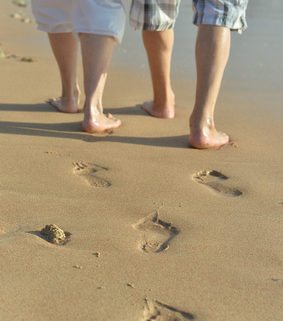Varicose Vein Information – 7 Interesting Facts about Varicose Veins
Basic varicose vein information isn’t hard to come by. The impact of obesity, pregnancy, aging, and common hormonal changes are fairly common knowledge. But like all topics of interest, you’re bound to find more trivial information the deeper you dig. In that spirit, here are 7 interesting facts about varicose veins you might not have known:
- Support hose won’t make varicose veins disappear. Despite some well-travelled, antiquated myths, perhaps passed down from a wise aunt or grandmother, wearing stockings does not cause them to magically disintegrate. They do help treat systems, however.
- Men also get varicose veins. Yes, they’re a greater issue with women, but some men – estimates as high as 30 percent – are susceptible, too. It’s believed Henry VIII, weighing in excess of 300 pounds, suffered from varicose veins. Because weight is such a key factor, it’s not much of a leap to think football players may also struggle with varicose veins.
- The first recorded case of varicose veins is from 86 BC. Roman general Caius Marius is described in texts from the period as suffering from the condition. At the time, he allowed himself to be subjected to archaic surgical methods to find relief. As expected, those tactics were unsuccessful. Perhaps that experience is what contributed to him later becoming a mad tyrant.
- Of all animals, giraffe’s have the greatest pressure in their legs, yet they don’t get varicose veins. Because their veins and arteries are concentrated in the center of their legs, and they have really thick skin (literally), varicose veins aren’t a problem. As some experts are fond of saying, it is like giraffes wear permanent compression stockings.
- Hemorrhoids are a type of varicose vein. Most people assume varicose veins are found exclusively in the legs. That’s not the case if you include this particular version. The next time someone states the old tale that Napoleon lost the Battle of Waterloo because of his hemorrhoids, you wouldn’t be wrong to pipe in with this bit of information.
- A type of varicose vein suffered by men is known as a varicocoele. Affecting as much as three-quarters of all men, a varicocoele is a collection that can occur in the left testicle and cause discomfort. Aside from modifying your diet and exercising, there’s little a man can do to prevent it from happening. You can treat the symptoms with warm baths and wearing underwear with greater support.
- Foods that cause expansion can make varicose veins worse. These include foods with a lot of sugar or that have a lot of vitamin C. A diet high in fiber and low in salt is recommended.



